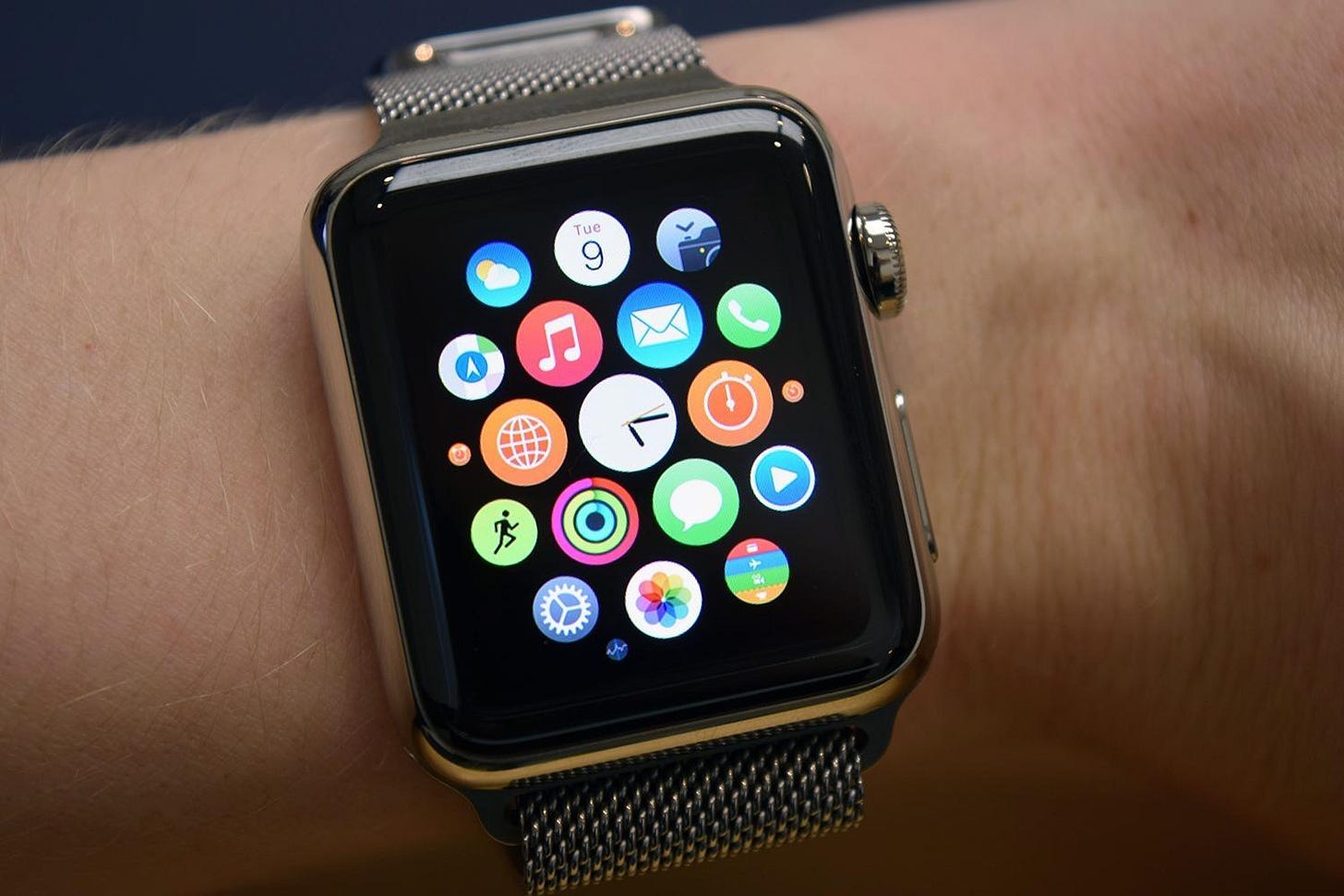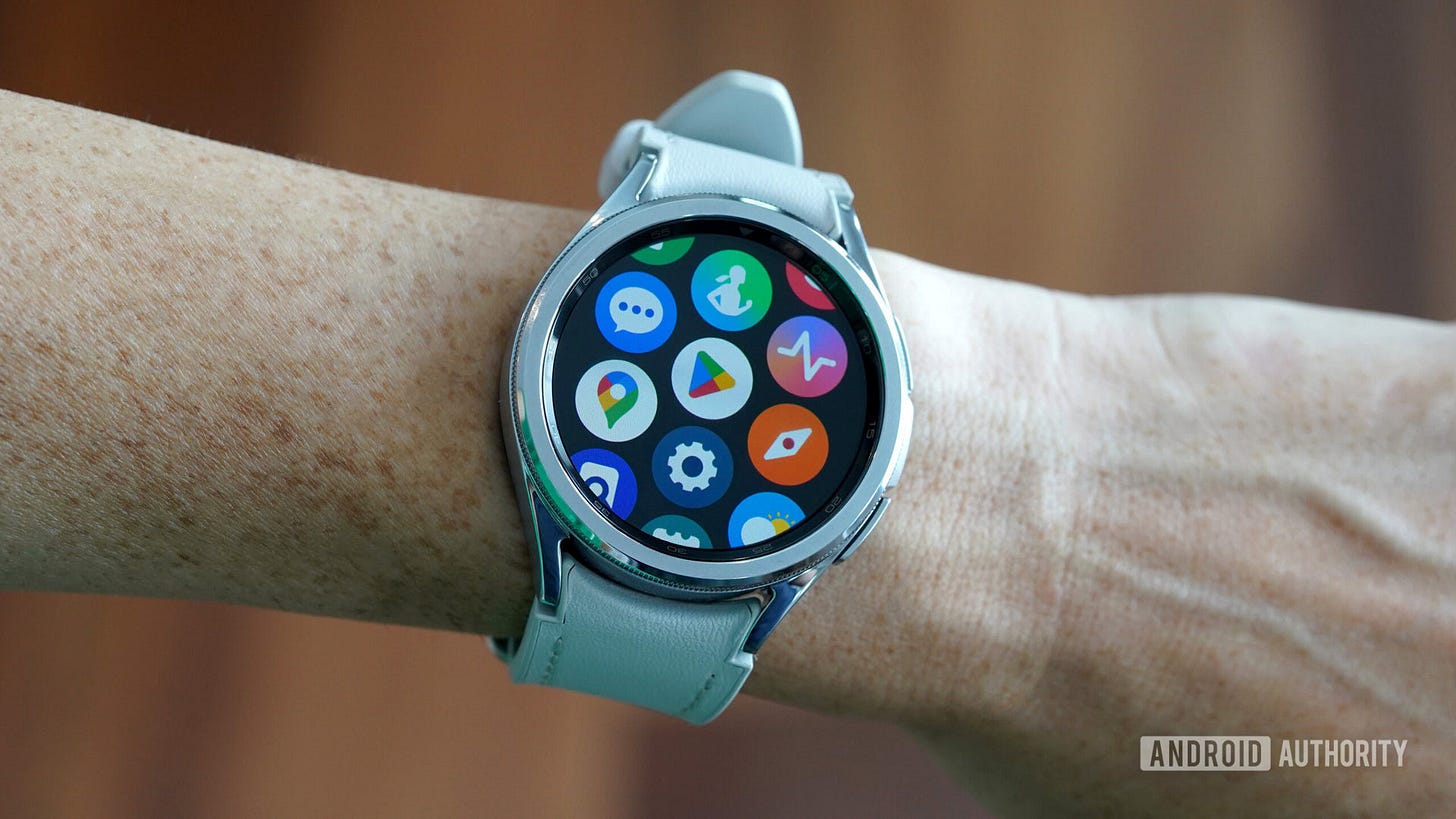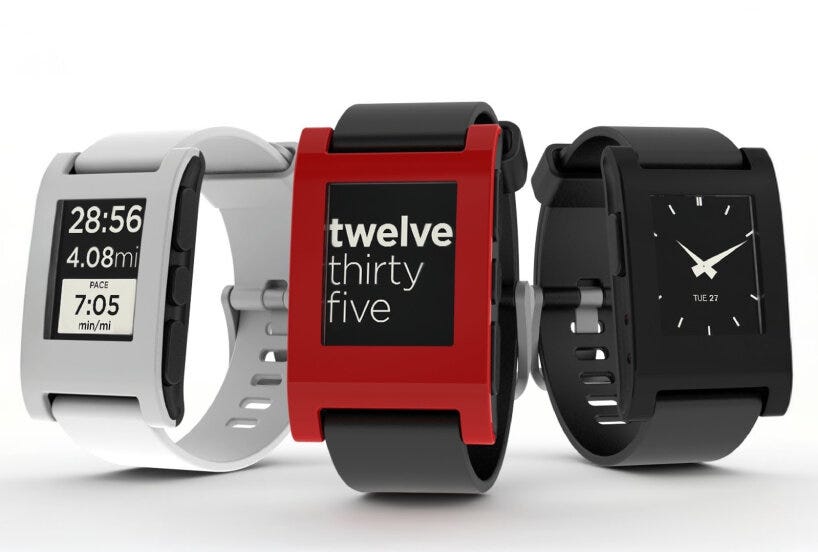The Smartwatch That Was Too Good For This World
How one startup created a product that left Apple and Google in the dust.
Last week, I got a notification, and as soon as I read it, I instantly knew what this week’s topic would be. The Pebble is back. For a lot of you, that sentence might not mean much. But for those who know, those who remember what this watch was and what it represented — we never thought we’d see the day.
This was a “smart” device that actually felt smart in its design — simple, direct, and practical. In a time where the whole tech industry was chasing trends (and let’s be real, they still are) and trying to turn everything into another smartphone, here was a product that both looked and felt unlike anything the competition had to offer.
In this article, I want to discuss not just about what made the watch so special, but also what the rise and fall of the device can teach us about engineering and design.
But first, let’s set the stage. Ever since the launch of the iPhone, tech companies have been always scrambling to find the “next big thing”. This year, the showroom at CES was dominated by smart glasses and the future they’ll supposedly provide.
But about a decade ago, there was another type of wearable that was generating all the buzz: smartwatches. The idea that you could check and control your phone without ever pulling it out seemed like the future of convenience to some — and to others a pointless gimmick.
Pebble was the first of its kind, but despite holding such a trailblazing spot, it’s not what typically comes to mind when you think of a smartwatch. For most people, a smartwatch is supposed to look more like this:
There’s no talking about smartwatches without talking about the Apple Watch. Pebble may have invented the modern smartwatch, but Apple defined it. Whether it’s in phones, laptops, or tablets, wherever Apple goes, their clout is usually enough to pull everyone else in their direction.
Watches are no exception: chances are if you’re in the market for a non-Apple smartwatch, you’ll be looking at options running on Google’s WearOS platform (basically the Android of smartwatches). Anything look a bit familiar about these watches?
One of the side effects of one company having so much power to define how an entire category of product is designed is that they end up defining said product’s uses and limitations in the public eye.
It’s crazy to think about now, but it’s been a decade since the launch of the original Apple Watch. As an engineering feat, it’s pretty impressive, showing a general level of consistency and quality not present on competing Android watches. But, if you were to go back and look at the reviews of the original product, what might ring most familiar are the complaints:
The watch cost $700, nearly as much as the phone it was acting as a second screen for.
We take it for granted, but it’s also worth noting that using this watch means you’re locked into the Apple ecosystem. If you want it to function, your current and future phones have to be iPhones1.
The battery was reported to last under a day, struggling to handle the power it crammed into such a small package.
The software was reported to be rather sluggish in its handling, with the tiny low-power processor having trouble keeping pace with the more complex operating system.
Having to fit all the features onto a tiny touchscreen created a convoluted interface which required remembering a variety of swipe gestures, in addition it poses issues for handling the interface with gloves or in the rain.
These mirror the concerns that have long been raised about smartwatches as a whole. There’s not just the question of how the Apple Watch measures up against other smartwatches of its time. Why spend money on this as opposed to a normal watch? Why not just pull out my phone from my pocket? And with each generation of product both from Apple and its competitors, the innovations and selling points centered around trying to solve these problems. Bringing the price down, extending the battery life, experimenting with different control schemes.
But there’s only so much technological progress can mitigate; these are incredibly complex systems and juggling all these things is a very difficult balancing act. Your average WearOS watch in the modern day will typically run you around ~$300. Premium versions of the Apple Watch are reported to get up to 3 days battery life.2 Modern processors have made these devices more responsive… at least until they’re bogged down with software updates that build up over the years.
These are improvements, but still a tough sell. For a lot of people, simply not having a smartwatch still seems to be the best answer. But what if I told you that there was a device which resolved all of these problems and was released in 2012, years before anyone else even took a crack at the concept.
This is the original Pebble that you would have seen in 2012. It looks a bit dorky, but the company would go on to release newer and sleeker versions in the coming years.
What’s most striking about the Pebble when you begin to use it is it’s relative simplicity. There’s no touch controls to fumble with because the whole watch can be navigated with only four buttons. The battery lasts about a week because it doesn’t need to use a high-resolution always-backlit display. The experience was always snappy and remained consistently so even as the device aged.
And how much did this whole package cost? Only 99 dollars3. That put it closer to the price of an ordinary “dumb” watch than the prices of any of the smartwatches it was competing with. I would not have been interested in Pebble (or any smartwatch for that matter) at the time if it was any more expensive.
And during the time I had one, it was great. I was able to keep tabs on my texts even when my phone was accidentally left on silent, control my music at the gym without having to fish for my phone, and even set reminders and alarms I’d be sure to notice. Even smaller, more fun things like installing an app that would allow me to play Pong while I was waiting in line for a couple seconds gave it a level of personality where the device genuinely became part of my daily carry.
Obviously other watches can do all this too, but what made Pebble work so well for me was how focused it was. I didn’t need all the other bells and whistles the other watches were promising, I didn’t need advanced fitness tracking or the ability to order a Domino’s pizza from my wrist4. But the simplicity did provide things other watches couldn’t.
This was a watch I could operate entirely with gloves or in the rain, because there was no touch-screen. This was a watch which took me zero time to learn how to operate, and one where I could forget to charge it for a night and not be completely short out of luck. This was a watch that was durable enough that I didn’t have to be delicate in handling it, and when it did break, I didn’t have to shell out $800 for a replacement. This was a watch that I carried daily for five years, and even as my phones would get bogged down with updates and slow to a crawl over that time, the watch remained just as responsive as when I first got it. I never felt like I was being punished for using the same old device as opposed to buying the hot new thing.
And maybe that’s part of why Pebble never caught on. It’s ethos ran completely counter to that of Silicon Valley. While we might have this idealized image of a Silicon Valley that’s constantly taking risks and breaking boundaries, the reality is a lot lamer. By the 2010s, this was an industry well into its gold rush. Everyone was so focused on recapturing lightning in a bottle to the point of letting past successes blind them to new possibilities. This is an environment where for the big players “taking risks” meant chasing trends and for startups meant angling to get bought out by a bigger player.
It’s still business at the end of the day, and no matter what the culture may have been decades before, the market that dominates the S&P 500 is constantly searching for limitless, repeatable formulas to growth and expansion (as absurd as the notion fundamentally is).
For companies like Google, Apple, and Samsung, the smartwatch was just one of many experiments they were willing to throw at the wall in the hopes something would stick. Unlike those companies, Pebble is first and foremost a smartwatch company. While those other companies have the cash to quickly spin up products and can them just as quickly if they don’t pan out, Pebble was in it for the long haul. Smartwatches weren’t merely a brief fling, they were the company’s lifeblood. What ended up doing the company in was (as per the founder’s own admission) that it got too eager to pursue this growth and overinvested in a line of products that didn’t deliver the needed returns.
Future revisions seemed indecisive on what direction to go, with the Pebble Time trying to position itself as a ‘productivity’ device and the Pebble 2 focusing on adding fitness features. The market for ‘productivity’ watches was entirely unproven and Pebble was wholly outcompeted by dedicated fitness companies such as FitBit.
The fact is the Pebble was not a product for everyone (neither are smartwatches), but it was a device with a very clear purpose for the people it was targeted to. It’s niche, geeky edge was part of what gave it identity. The base was small but that smallness allowed for the device to be more fun and expressive with its design and animations, and created room for a community to freely tinker with and make creatively develop apps around its relatively low-tech hardware. Even now, years after the company went out of business, the userbase developed solutions to unofficially support the old hardware and allow it to work well past its expiration date.
This makes the product an anomaly in an industry that’s always perpetually pushing consumers to buy more, buy new, and buying all sorts of different things. In some ways, it seems like the watch was too good at its job: it fulfilled its purpose for the people who needed it and it wasn’t clear what work there was left for the company to do. Of course, this isn’t entirely the case: future revisions did provide much-appreciated improvements and maintaining support/supply matters for a product like this. But it’s difficult to imagine — even if they made all the right decisions — a world where Pebble becomes a Big Tech giant.
Even in the world of the Big Tech giants, smartwatches never fully took off. The market still has its niche (mostly as glorified fitness trackers), but innovation in the market has mostly plateaued by this point, as companies move their efforts to other wearables.
Pebble would find itself bought up by FitBit (a juggernaut in the wellness-tracker space at the time), and took care to negotiate an agreement with the company that would extend support for the software and attempt to provide the best deal for existing users. The community tried to move onto another startup which was making something similar to the Pebble… until it was also very quickly bought out by FitBit. FitBit would in turn fail to keep up in a market dominated by tech conglomerates, and got swallowed up by Google. But behind the scenes since the FitBit acquisition, the developers were working on open-sourcing the Pebble OS. This brings us to the present day, where they finally announced the public release of the source code..
This was followed by the founder of Pebble announcing that, after all these years, he was going to be pursuing making another Pebble-like device. In the years since Pebble rose and fell, there has never been a device that really came close to capturing that experience. Hardware manufacturing is an incredibly risky and difficult business, so there’s no telling how this venture will end. Maybe prior experience will give him a leg-up to succeed this time.
But even if it does fail, the fact is you can take your old Pebble watch (or buy an old one second-hand) and still use it today with Rebble. All the old software and apps the community made are still online. Being able to reuse a discontinued device like that years later is not something you see often. And in some ways, I do think the deliberately retro aesthetic the Pebble was designed with gave it a sort of timeless quality — it doesn’t feel as dated as its contemporaries.
I bring up all this not to advertise a product that’s barely been announced or just to reminisce on a cool piece of tech, but to hopefully drive home a larger point about design. You don’t have to own one of these to appreciate the lessons the case study can provide. As consumers, it’s easy for the market to trick us into thinking innovation is all about changing everyone’s lives all the time. That’s what’s most profitable after all.
But I’d like to propose a different approach to engineering: that we just make things that are simply useful. They don’t need to wow, they don’t need to be for everyone, they don’t need to completely alter how we go about our days, they just need to be effective tools. When I buy a hammer, I don’t need it to be a monumental experience, it just needs to hit some nails. This means we should be focusing on principles such as simplicity, sustainability, and flexibility in mind. We should be building stuff not just to buy and throw away — but stuff we can use, understand, tinker with, and preserve. They don’t need to change our lives, they just need to fit into the life that already exists.
This means we might be making cheaper devices, it might mean making less devices, less-powerful devices, and less-fashionable ones. But what is engineering if not creatively working around and within constraints? The stuff programmers of even a couple decades ago were able to squeeze out of far more primitive technology is genuinely awe-inspiring. But yet it seems like an art we’re losing sight of as we as a society choose to eschew creativity in favor of more horsepower as a solution to all our problems. We’ve created an industry that cannot distinguish between talent and success, one where hype matters more than substance.
It’s in an environment where we’re not constrained to defining success as a single metric on a balance sheet that we can get inventions that are fun again — but in their own ways. Weird, individualistic quirks shine in technological landscapes which haven’t quite yet settled on “the one solution”.
The classic tropes of science fiction love to imagine that a world of complex gadgets and gizmos as a far more exciting one, but something odd has happened in our own world. Things may have gotten more advanced, but they’ve also become really boring.
The reverse holds true for WearOS, which is dependent on connectivity to an Android device.
The Apple Watch Ultra Series 2 is the watch in question, running for $799. The regular Apple Watch still has under a day’s worth of battery life.
The watch initially launched at $150, but adopted a price cut down to $99 by the time its first real competition (WearOS) came out.
Fun fact, you can actually order a real-life Domino’s pizza from within the video game Skyrim.




